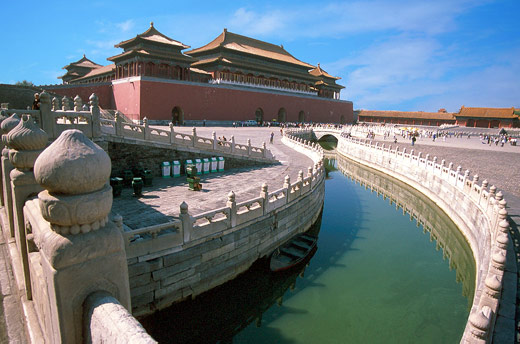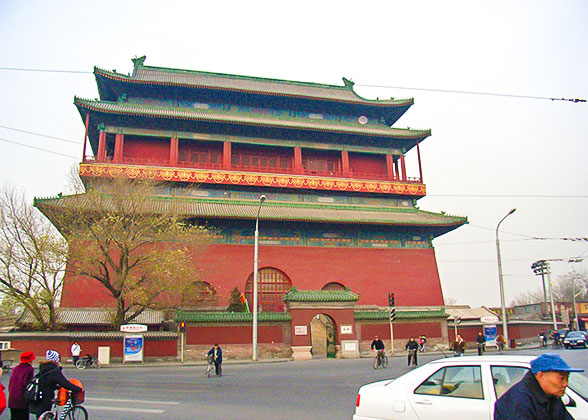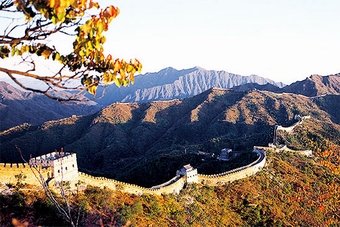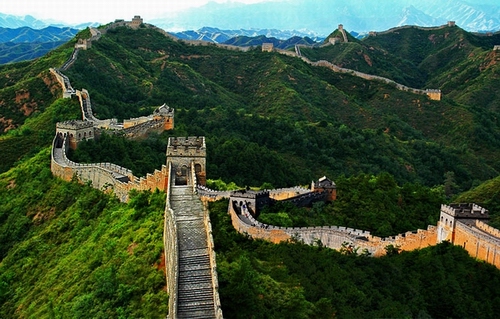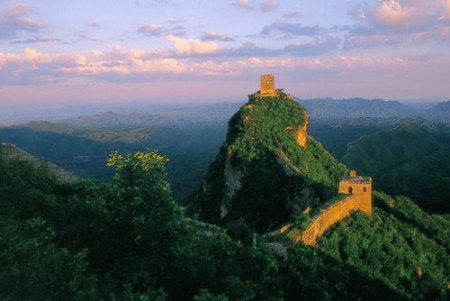Maps
Currency
$1 = 6.80
$5 = 35
$10 = 68
$15 = 102.30
$20 = 136.40
$25 = 170.50
$50 = 340
$5 = 35
$10 = 68
$15 = 102.30
$20 = 136.40
$25 = 170.50
$50 = 340
visa applications
$130 + service
Emergency Info:
emergency directory #110
American Citizen Services
U.S. Embassy, Beijing
No. 55 An Jia Lou Road Beijing 100600
Telephone: (86-10) 8531-4000
In case of emergencies, please contact (011-86-10) 8531-4000 if you are calling from the United States, or 010-8531-4000 if you are calling from China.
Visa's emergency number 010/800-744-0027
American Express cardholders 010/800-744-0106
Call China from US: 011+ 86 + area code + number
Call US from China: 00 + 1 + area code + number
Call US from China: 00 + 1 + area code + number
Call China within China locally: number
Call China within China L D: area code + number
Tap water in mainland China is not drinkable, and should not even be used for brushing your teeth. Use bottled water!
Leaving Beijing
As you face the terminal, international departures are to the right, and domestic to the left.
Expect to pay around ¥80 ($11/£5.35) to reach the eastern part of the city and around ¥100 ($13/£6.65) to reach the central hotels. Many of the better hotels provide a card with the taxi's license plate when you get in a taxi at the front door. Retain this card should you have a problem with the driver, or should you leave something in the taxi.
Transportation:
Leaving Beijing
As you face the terminal, international departures are to the right, and domestic to the left.
Beijing Transportation
The airport is 26 kilometers, or 40 minutes, from the center of Beijing.
Taxi: Available on the lower level just outside the Arrivals area. There is no real difference between the various taxi companies in Beijing. AVOID drivers who approach you in the terminal. There is a taxi line just outside the terminal. Drivers should use their meter; make sure that the driver puts down the flag, as some drivers will say they forgot and ask for a ridiculous amount of money. The cost to midtown Beijing is normally around RMB70 depending on the type of taxi, plus RMB15 for the highway toll. There is no need to tip taxidrivers in Beijing unless they render extra assistance with bags, etc. Expect to pay around ¥80 ($11/£5.35) to reach the eastern part of the city and around ¥100 ($13/£6.65) to reach the central hotels. Many of the better hotels provide a card with the taxi's license plate when you get in a taxi at the front door. Retain this card should you have a problem with the driver, or should you leave something in the taxi.
Restaurants:
Dong Hua Men Night Market in Beijing is located at west of Wang Fu Jing Avenue in Beijing. The major activity of the market includes dining with a variety of food stall in innumerable numbers.
Music Clubs/Bars:
Hotels in Wangfujing/Forbidden City area:

Hotel name: Sihe Courtyard Hotel Beijing
5 DengCao Hutong Dongsi South Street
Dongcheng Beijing
Beijing, CN 100010
86-1051693555
Tripadvisor
http://www.sihehotel.com/en/
email: sihehotel@yahoo.com.cn
OTHERS:
Shijia House in a Hutong, $140 Tripadvisor
Sihe Courtyard a Hotel in a Hutong, $115 Tripadvisor
Hotel Cote Cour in a Hutong, $160 Tripadvisor review
The Emperor in a Hutong, $137 free wifi Tripadvisor
Kapok near Wanjingfu $95 free wifi Tripadvisor
The Emperor in a Hutong, $137 free wifi Tripadvisor
Kapok near Wanjingfu $95 free wifi Tripadvisor
Crown Plaza in Wanjingfu area $100 Tripadvisor
Park Plaza in Wanjingfu area $105 Tripadvisor
Neighborhoods:
The Shicha Hai (Back Lakes) and Di'an Men area within Xi Cheng, with its string of lakes and relatively well-preserved hutong, is where the last fading ghosts of (pre-1949) Old Beijing reside. It's popular among writers, musicians, foreigners teaching in Beijing, and other younger expatriates who haunt a collection of trendy, nameless bars and cafes at the waters' edge.
Park Plaza in Wanjingfu area $105 Tripadvisor
Bamboo Garden Hotel in Xicheng district $100 Tripadvisor reviews
Shangri-La Beijing Hotel in Haidian district $160 Tripadvisor reviewsNeighborhoods:
The Shicha Hai (Back Lakes) and Di'an Men area within Xi Cheng, with its string of lakes and relatively well-preserved hutong, is where the last fading ghosts of (pre-1949) Old Beijing reside. It's popular among writers, musicians, foreigners teaching in Beijing, and other younger expatriates who haunt a collection of trendy, nameless bars and cafes at the waters' edge.
Chongwen (east) and Xuanwu (west), both enclosed by the suburban sprawl of Fengtai to the south and southwest has been squalid since its construction in the Ming dynasty.
Shopping:
The Panjiayuan Market 潘家 园 is a super shopping market for all Chinese arts and crafts. It is made up of over three thousand individual stalls covering 48,500 square metres. There really is something for everyone here. Even Hilary Clinton has shopped at Panjiayuan.
There is a little overlap between stalls so you can compare and bargain but the range of goods is excellent. Stall owners come from twenty-four provinces around China to sell their wares.
Panjiayuan Market is at its best on weekends. The Antique Zone is open every day and the Arts and Crafts Warehouse Zone is open on Saturday and Sunday only.
Attractions:
Dong Hua Men Night Market - 0.5 km / 0.3 mi
St. Joseph's Cathedral - 0.7 km / 0.4 mi
China Museum of History - 1.1 km / 0.7 mi
Huabiao - 1.2 km / 0.7 mi
Tiananmen Square - 1.4 km / 0.9 mi
Forbidden City - 1.4 km / 0.9 mi
The Underground City - 1.6 km / 1 mi
Great Hall of the People - 1.7 km / 1 mi
National Centre for the Performing Arts - 2 km / 1.2 mi
Beihai Park - 2.5 km / 1.5 mi
Olympic Park - 2.6 km / 1.6 mi
Temple of Heaven - 3.1 km / 1.9 mi
Lama Temple - 4.2 km / 2.6 mi
Beijing Aquarium - 7.1 km / 4.4 mi
Old Summer Palace - 14.5 km / 9 mi
Itineraries in 1-3 days:
http://www.frommers.com/destinations/beijing/0201020766.html
Summer Palace
颐和园
The Summer Palace or Yihe Yuan
¥60 combo admission
06:30-18:00
The Summer Palace or Yihe Yuan (simplified Chinese: 颐和园; traditional Chinese: 頤和園; pinyin: Yíhé Yuán; literally "Gardens of Nurtured Harmony") is a palace in Beijing, China. The Summer Palace is mainly dominated by Longevity Hill (60 meters high) and the Kunming Lake. It covers an expanse of 2.9 square kilometers, three quarters of which is water. The central Kunming Lake covering 2.2 square kilometers was entirely man made and the excavated soil was used to build Longevity Hill. In the Summer Palace, one finds a variety of palaces, gardens, and other classical-style architectural structures.
Qinian Dian (Temple of Heaven).
天壇
Qinian Dian (Temple of Heaven)
¥35 combo admission
06:00-16:00
Its history dates back to 1420, but the current structure is a replica built in 1889 when the original burned to the ground. The circular wooden hall, with its triple-layered cylindrical blue-tiled roof, is perhaps the most recognizable emblem of Chinese imperial architecture outside of the Forbidden City. The main hall is 38m (125 ft.) high and 30m (98 ft.) in diameter and -- here's the kicker -- it was constructed without a single nail.

Forbidden City
紫禁城
Forbidden City
¥60
08:30 to 17:00
The Forbidden City was the Chinese imperial palace from the Ming Dynasty to the end of the Qing Dynasty. It is located in the middle of Beijing, China, and now houses the Palace Museum. For almost five hundred years, it served as the home of the Emperor and his household, as well as the ceremonial and political centre of Chinese government.
Built in 1406 to 1420, the complex consists of 980 surviving buildings with 8,707 bays of rooms[1] and covers 720,000 m2 (7,800,000 sq ft). The palace complex exemplifies traditional Chinese palatial architecture,[2] and has influenced cultural and architectural developments in East Asia and elsewhere. The Forbidden City was declared a World Heritage Site in 1987,[2] and is listed by UNESCO as the largest collection of preserved ancient wooden structures in the world.
Drum and Bell TowerGǔlóu (鼓楼), the drum tower of Beijing, is situated at the northern end of the central axis of the Inner City to the north of Di’ anmen Street. Originally built for musical reasons, it was later used to announce the time and is now a tourist attraction. ¥20
Zhōnglóu (钟楼), the bell tower of Beijing, stands closely behind the drum tower. Together with the drum tower, they provides an overview of central Beijing and before the modern era, they both dominated Beijing's ancient skyline. ¥15
Dong Hua Men Night Market - 0.5 km / 0.3 mi
St. Joseph's Cathedral - 0.7 km / 0.4 mi
China Museum of History - 1.1 km / 0.7 mi
Huabiao - 1.2 km / 0.7 mi
Tiananmen Square - 1.4 km / 0.9 mi
Forbidden City - 1.4 km / 0.9 mi
The Underground City - 1.6 km / 1 mi
Great Hall of the People - 1.7 km / 1 mi
National Centre for the Performing Arts - 2 km / 1.2 mi
Beihai Park - 2.5 km / 1.5 mi
Olympic Park - 2.6 km / 1.6 mi
Temple of Heaven - 3.1 km / 1.9 mi
Lama Temple - 4.2 km / 2.6 mi
Beijing Aquarium - 7.1 km / 4.4 mi
Old Summer Palace - 14.5 km / 9 mi
Itineraries in 1-3 days:
http://www.frommers.com/destinations/beijing/0201020766.html
Summer Palace
颐和园
The Summer Palace or Yihe Yuan
¥60 combo admission
06:30-18:00
The Summer Palace or Yihe Yuan (simplified Chinese: 颐和园; traditional Chinese: 頤和園; pinyin: Yíhé Yuán; literally "Gardens of Nurtured Harmony") is a palace in Beijing, China. The Summer Palace is mainly dominated by Longevity Hill (60 meters high) and the Kunming Lake. It covers an expanse of 2.9 square kilometers, three quarters of which is water. The central Kunming Lake covering 2.2 square kilometers was entirely man made and the excavated soil was used to build Longevity Hill. In the Summer Palace, one finds a variety of palaces, gardens, and other classical-style architectural structures.
Qinian Dian (Temple of Heaven).
天壇
Qinian Dian (Temple of Heaven)
¥35 combo admission
06:00-16:00
Its history dates back to 1420, but the current structure is a replica built in 1889 when the original burned to the ground. The circular wooden hall, with its triple-layered cylindrical blue-tiled roof, is perhaps the most recognizable emblem of Chinese imperial architecture outside of the Forbidden City. The main hall is 38m (125 ft.) high and 30m (98 ft.) in diameter and -- here's the kicker -- it was constructed without a single nail.

Forbidden City
紫禁城
Forbidden City
¥60
08:30 to 17:00
The Forbidden City was the Chinese imperial palace from the Ming Dynasty to the end of the Qing Dynasty. It is located in the middle of Beijing, China, and now houses the Palace Museum. For almost five hundred years, it served as the home of the Emperor and his household, as well as the ceremonial and political centre of Chinese government.
Built in 1406 to 1420, the complex consists of 980 surviving buildings with 8,707 bays of rooms[1] and covers 720,000 m2 (7,800,000 sq ft). The palace complex exemplifies traditional Chinese palatial architecture,[2] and has influenced cultural and architectural developments in East Asia and elsewhere. The Forbidden City was declared a World Heritage Site in 1987,[2] and is listed by UNESCO as the largest collection of preserved ancient wooden structures in the world.
Drum and Bell TowerGǔlóu (鼓楼), the drum tower of Beijing, is situated at the northern end of the central axis of the Inner City to the north of Di’ anmen Street. Originally built for musical reasons, it was later used to announce the time and is now a tourist attraction. ¥20
Zhōnglóu (钟楼), the bell tower of Beijing, stands closely behind the drum tower. Together with the drum tower, they provides an overview of central Beijing and before the modern era, they both dominated Beijing's ancient skyline. ¥15
| Admission Fee: | CNY 15 (Bell Tower) ; CNY 20 (Drum Tower) |
| Opening Hours: | 09:10 to 17:00 |
| Subway: | Subway Line 2 (Ring Line): get off at Guloudajie Station, get out of the station from Exit B (southwest exit), and walk south |
The Great Wall at Mutianyu慕田峪
Mutianyu, Great Wall
¥45
8am-5pm
90km (56 miles) NE of Beijing
The ticket office at Juyong Guan (tel. 010/6977-1665) is open daily from 8am to 5pm. Admission is ¥45 ($6/£3) in summer, ¥40 ($5.35/£2.65) in winter.
Getting There -- A round-trip taxi should cost less than ¥200
you no. 6 combines a trip to Mutianyu with visits to a temple and a lake; it leaves from the northeast side of the Xuanwu Men (206) metro stop (Sat-Sun 6:30-8am, every 30 min.; ¥50/$6.65/£3.35). The bus stops at Mutianyu for about 3 hours.
You can choose to take a ski lift (enclosed or open) up to the wall and even take a toboggan ride down.
The Great Wall at Jinshanling
The Great Wall at Simatai
The Great Wall at Jiankou
70km (44 miles) NE of Beijing
Visitor Information -- This is pure, unadulterated Wall, so there is no ticket office. Villagers charge ¥5 (65¢/35p) for parking, and may tack on ¥10 to ¥20 ($1.35-$2.65/65p-£1.35) per person, but you can decline to pay all but the parking fee. Open 24 hours. Bring your own lunch. Bottled water is usually available at the parking lot -- bring plenty of water for the hike.
Getting There -- Since it's a remote location, you'll have to arrange a private car. Have your hotel concierge arrange a driver, or have them call one of two drivers: Mr. Liu (tel. 0/13661162308) or Mr. Zhang (tel. 0/13501189730) (neither speaks English, so you may need your concierge to help ring them up). The return trip takes 4 hours (plus figure in 5 hours of wait time for your hike) and will cost ¥500 ($67/£33), more if arranged by your hotel.
Huguang Huiguan Ancient Opera Building
湖广会馆
北京市宣武区虎坊路3号
Huguang Huiguan Ancient Opera Building
3, Hufang Lu, Xuanwu District
(+86) 135 5252 7373
thebeijingtickets@gmail.com
7:30pm every evening







